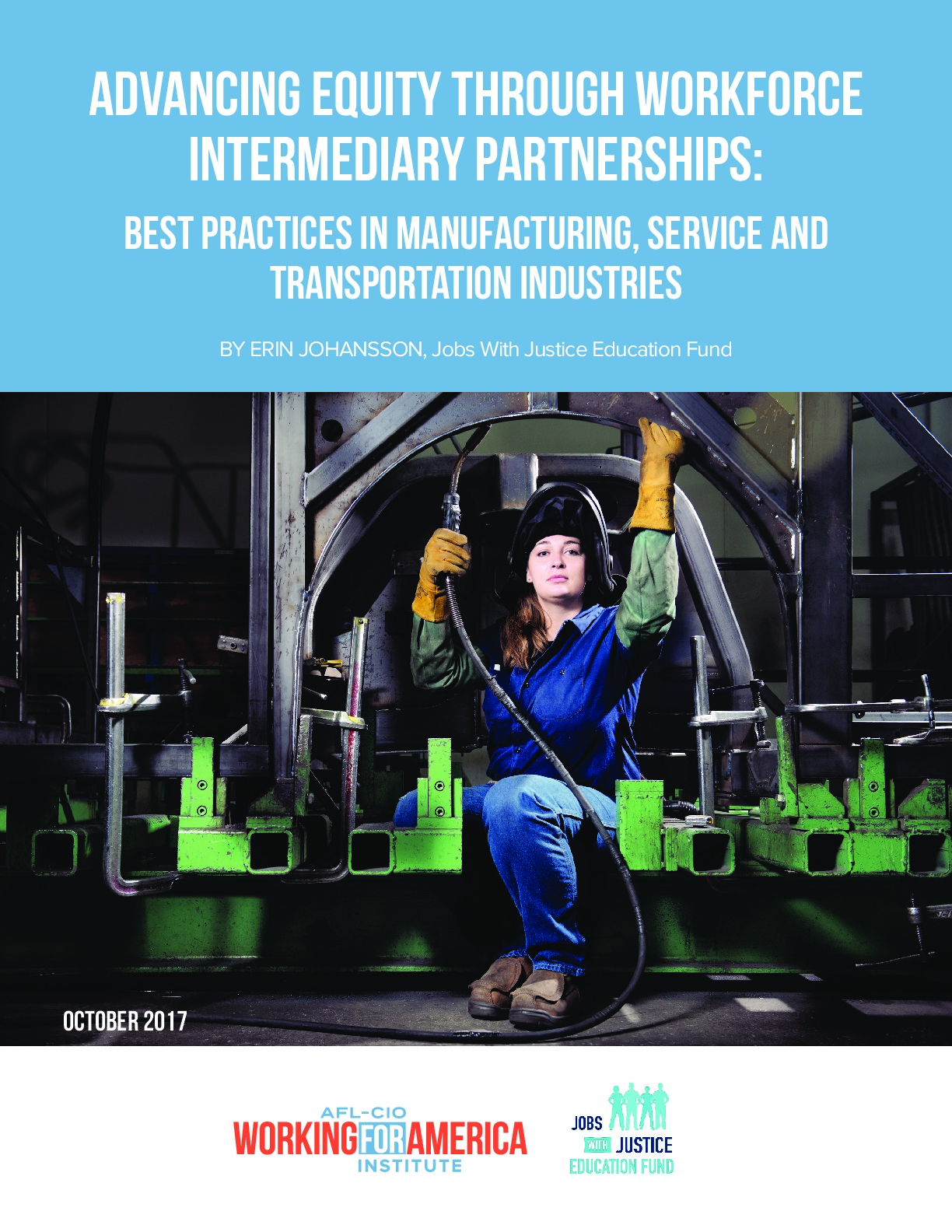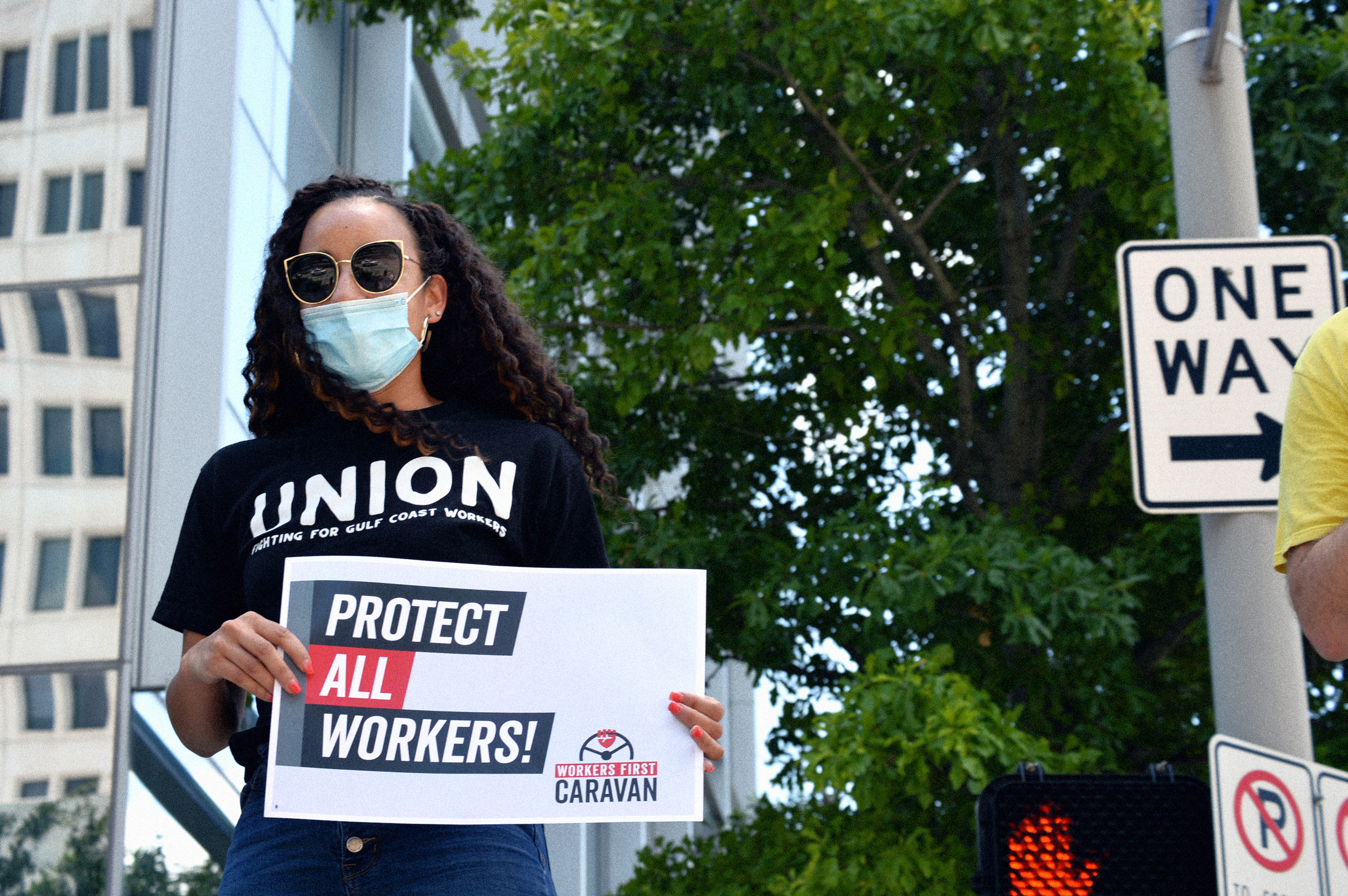Over the past several decades, a declining number of good jobs have been available to Americans without postsecondary credentials or certifications. These are jobs that pay family-sustaining wages, include health care and retirement benefits, and offer opportunities for advancement. The gap in wages between college and high school graduates—57% in 2016—has grown steadily since 2000. Race and ethnicity exacerbates this inequality. While the average college graduate earns $1,227 per week, Latino workers earn on average $610 per week with only a high school degree while black workers average $579 per week. In the national cohort of students who entered college in fall 2008, only 55% completed their studies and obtained a degree by 2014.
The combined impact of the Great Recession, automated technology, the outsourcing and offshoring of jobs, the corporate attack on unions, and the conversion of production to a service-sector economy contributed to the narrowing paths of those without some postsecondary education. College costs are spiraling upward while student debt for college grads has reached record levels. Access to multiple career pathways and alternative education and training positions are critical to addressing inequality and building a more diverse workforce.
At the same time that many working people struggle to find secure employment, employers report difficulty recruiting workers with the specialized skills increasingly required in manufacturing, health care, transportation, construction and a range of other sectors. The retirement of massive numbers of baby boomers further complicates the workforce situation. Though more firms appear to be interested in apprenticeship, many companies continue to underinvest in the training needed by their employees. As employers increasingly subcontract and outsource a range of functions previously performed in-house, there are fewer options for people to move up within the same firm. The U.S. economy could see a labor shortage of 20 million workers by 2020, with two-thirds of the expected shortage in the most skilled jobs.
Despite these huge obstacles, a growing number of workforce intermediary partnerships are spreading across the country to meet the dual needs of employers and working people. Workforce intermediary partnerships:
- Bring together unions and employers to assess the training needs of firms in a given sector or region;
- Help to customize the training, apprenticeship and educational services required;
- Cultivate the partners needed to produce the training;
- Recruit oftentimes from disadvantaged communities; and
- Ensure that those individuals who invest in their employment security will be rewarded with meaningful advancement along a career ladder.
Progress is evident in a number of industries in diverse localities. Hotel restaurant employees in Boston and Los Angeles, for example, are accessing free classes to move into more highly skilled, higher-paying positions. Kaiser Permanente is working with its employees’ unions to meet their evolving training needs and keep them competitive in the health care sector. Women are being actively recruited for training programs in transportation maintenance and other occupations where they are underrepresented, while young people are given opportunities to enter aerospace apprenticeships right out of high school.
This report details these and other examples of the breakthroughs that workforce intermediary partnerships are making to ensure employers have the skilled workforce needed for today’s economy and workers are well-positioned on pathways to family-sustaining careers.



